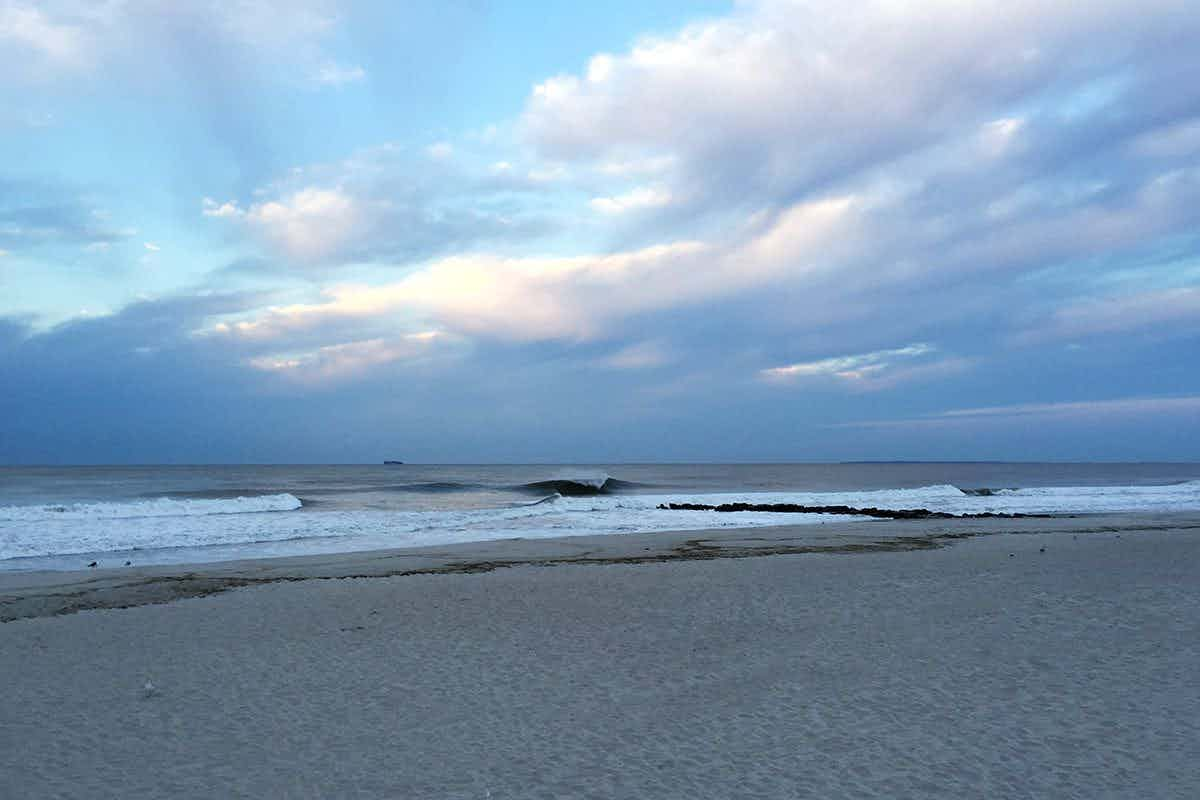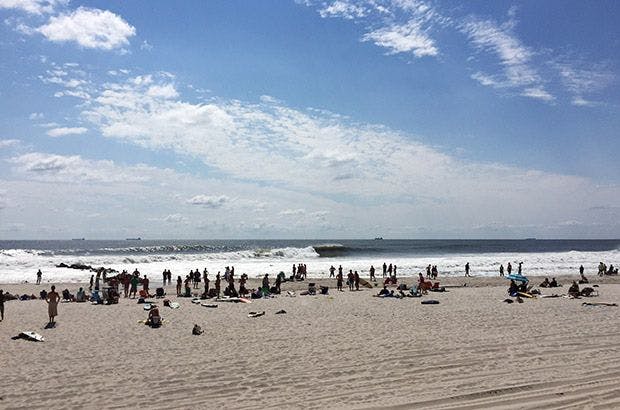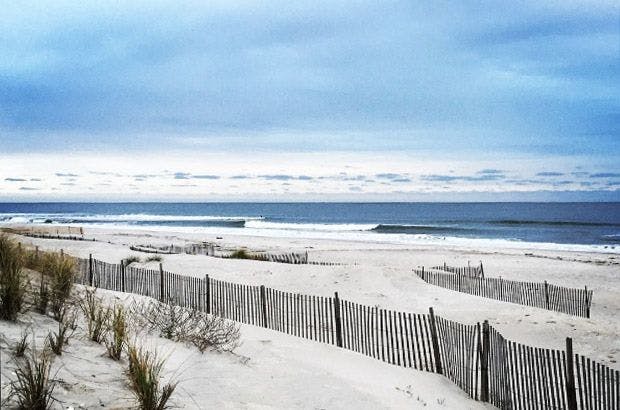TravelDeparture Gate: New York

Compiled by Mat Arney and Kerianne Kreger.
New York isn’t the first place that springs to mind when asked to think of a surf destination, or even when asked to think of a major city where you can surf. It wouldn’t even be the first major city with waves in America that you’d be likely to think of either, if we’re all honest, probably coming in a fair way behind a host of West Coast conurbations at the very least. But under the umbrella that is New York, beyond the nucleus of Manhattan and all of the imagery that the Big Apple conjures up, there are waves – and good ones at that.
Long Island is the longest (hence the name) and largest island in the contiguous United States, stretching 118 miles east-northeast from Brooklyn (the other side of the East River from Manhattan) to Montauk in the far east; a sliding scale from urban through suburban to the semi-rural as you travel from west to east away from New York City. New York’s Lower Bay is the point at which the east coast of the United States bends out into the Atlantic Ocean as the largely easterly facing coast of New Jersey takes a right hand turn, so the ocean-facing coastline of Long Island has a more south and southeasterly orientation open to the hurricane swells of late summer and early autumn as well as groundswells generated by winter storms. Along its 118-mile length, Long Island offers up a sample set of the east coast of America’s most stereotypical waves, from the regular groyne-influenced beach breaks of Rockaway and Long Beach to the barrier-island style shifting peaks of the Hamptons and then the cobble points and reefs of the far east end around Montauk; it’s like the entire wave menu of the east coast in an easy to digest destination served by two major international airports.

The closest surf break to the city is Rockaway Beach (made famous by the 1977 Ramones hit), which can be reached on the city’s public transit system (about an hour and a half from midtown Manhattan). Rockaway has a rock jetty at 92nd street that creates long, fast left-hander, whilst the eastern-most stretch from 30-39th Streets offers heavy beach breaks (and strong rips) – winds from the northern quadrant are offshore. Rockaway Beach Surf Club is a hub for surf culture events.
Quiksilver’s 2011 WCT event put pumping Long Beach in front of surfers around the world, many of whom would never even have conceived of New York having surfable waves. A series of jetties that trap sand and form the sort of A-frames that many surfers would confuse for the coast of France on the other side of the Atlantic (but with the lefts being slightly preferable to the rights, as opposed to vice-versa in France), the main spots are Lincoln Boulevard and Lido Beach. Lincoln is right in the thick of it all, fronted by a boardwalk and shops, and it gets busy. The best peak shifts with the sand on an almost daily basis. Further east is Lido Beach, which is usually a bit bigger than nearby spots thanks to some favourable offshore bathymetry that focuses south swells. It produces heavy A-frames when the swell gets overhead (resulting in the nickname “Lido-Escondido”), but as with any powerful beach break at size the currents can be strong and it’s a workout on the arms. There are beach access fees in summer, but when there is a decent swell this doesn’t deter some of Long Island’s best surfers from converging on Lido Beach.

As you move east along Long Island you reach the Hamptons; a long stretch of beaches and barrier islands backed by inland bays, lakes and ponds, or inordinately expensive beachfront homes. At the far west end of the arm that extends across Shinnecock Bay from Southampton is Flies, a fun right hander that peels off the jetty at the mouth of the inlet. You need a permit to drive into the state park to get there however, so access and parking are difficult and likely to be costly, and there’s a rip (that is best avoided) that runs around the jetty that can pull the unwary into the Bay.

The stretch running from Southampton along to East Hampton is uninterrupted beach and so sand banks come and go, and the quality of a season can vary depending on whether the banks have formed properly or not. The area around Bridgehampton and Mecox Bay can offer good peaks, with lefts or rights predominating depending upon the swell direction. The same can be said for much of this stretch, which can offer relative isolation as the multiple peaks can thin the number of surfers. Beach Clubs and private residences can impede beach access, and parking can be a pain: permits are required in many places, and during the peak summer months when the Hamptons is the place to be they are strictly enforced. Just west of East Hampton there are three jetties in front of the barred Georgica Cove that trap sand and produce great waves. You’ll need to park at Georgica Beach and walk along the beach though, as the beachfront houses along here block block access and are enormous, expensive, and very exclusive – you can give Steven Spielberg a wave as you walk past his summer house on your way to surf, for example.
At the far eastern end of Long Island is Montauk. If there is only one spot breaking on Long Island then it will probably be around Montauk, a town that’s emerged as the hub of Long Island surf style. Longboarders abound here, and many of them head to Ditch Plains. The wave here is soft, so well suited to all abilities and you’ll often see some incredible longboard styling going down right alongside the summer surf schools. If there’s a little too much wind then you can find some shelter at Turtles, Pill Box, and Radars. Atlantic Terrace is a sand covered reef that faces south and packs a bit more punch than its neighbors. There are several peaks and the crowd tends to thin as the size of the swell increases.
Long Island has a lot to offer a visiting surfer, beyond simply the novelty value of “surfing in New York”. There are an enormous variety of waves along its 118 miles of southerly facing coastline that have been enjoyed somewhat under the radar by local surfers for many decades. Being so densely populated and with one of the World’s most famous cities overlapping one end of it, it’s not without its own specific set of surf-related problems surrounding crowds and beach access though. It’s also not particularly consistent, sitting at the mercy of groundswells generated by hurricanes and North Atlantic winter storms, or southerly wind swells. Late summer into fall, when summer crowds have started to wane and hurricane season is in full swing, is the best time to visit as a surfer; winter gets good waves but the air and water temperatures drop brutally low (air can dip to below 20°F/-6°C whilst water temps can hover just above freezing point) so a sealed winter suit (as thick as you can find) with hood, boots and gloves goes without question. Speaking of winter, post-surf pancakes and coffee are available year-round from John’s Pancake House in Montauk (lots of places close in the winter). Other notable eateries include The Gig Shack in Montauk (order the spicy tuna taquitos), Tate’s Bakery in South Hampton, and Lost and Found in Long Beach (if you can get a reservation). If the swell dies then head to Sag Harbor to check out the shops and perhaps rent an SUP for a paddle around the bay and check out the incredible boats often moored there. Golfers can go and hit a ball around the renowned Montauk Downs State Park Golf Course, one of the top public golf courses in the US. And then there’s always the allure of the big city back at the other end of Long Island; a destination that many people will travel half way around the world to spend a weekend in can be your flat-day culture trip. Covering things to do in NYC is too large a task for this article, but you won’t struggle to find resources to help you research a day out in Manhattan. If you score a decent hurricane swell however, you may only see the city from the air as you fly over it on your way in and out and you may not feel as though you’ve missed out if you’ve been getting barreled all week.
WHERE: Fly to John F. Kennedy International Airport (JFK) or LaGuardia Airport (LGA), both at the western end of Long Island.
WHEN: August and September for prime Hurricane Seasons swells.
WHY: Classic beach break peaks within a stone’s throw of one of the world’s greatest cities.
HOW: Whatever you fancy, from a fish or standard shortboard to a step-up for solid swells or a traditional longboard out east.